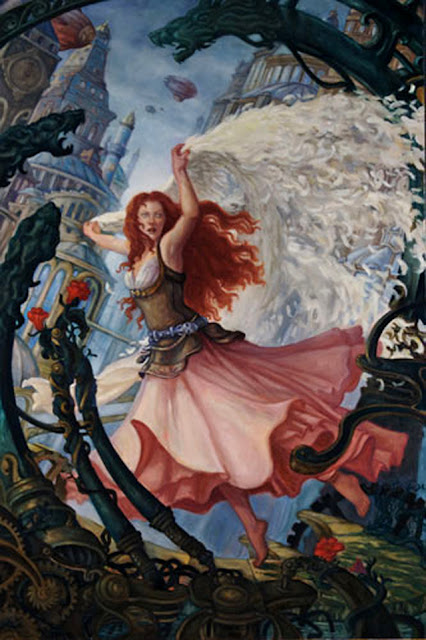Two more videos and posts so far. Here are some excerpts:
A Dream Walking: Desire and Fantasy in Catherine Breillat's "The Sleeping Beauty" by Michael Bessozi (Georgia State University)
There is a sinister and tragic element that underlines popular fairy tales. Elements of the fantastic become interspersed with anxieties and desires revolving around identification. At the core of many of Hans Christian Anderson’s reinterpretations of various folk tales was an aura of melancholy surrounding the personal sacrifices made for the sake of dreams. Stories such as "The Little Mermaid" become all too familiar as the macro tensions of social expectations and cultural roles obstruct the dreams of the individual. The fantasy becomes all the more cruel and heartrending as individual hopes and goals prove to be unattainable. (Continue reading HERE.)
One of the comments (which, although is somewhat simplistic in the summary of the role of fairy tales over time, does touch on an interesting point of view regarding retellings in popular entertainment):
Dream vs Reality: Wow, you have a brilliantly written argument and piece here. I immediately want to see this film not only because of it’s surface fairy tale element, but it’s deeper twists of it. I think fairy tales deal with this dream vs. reality element that you bring up a great deal, especially by the audience. In the past fairy tales were used as a way to illustrate a moral lesson. Later on, especially with Disney adaptations of them, they became more dream-like escapes for the audience. And now with modern retellings, it seems like it’s become a new level entirely, one that brings the dream-like state into the reality and forcing the audience to get rid of their original ideas and notions of fairy tales and see them in this new light.
Anime Fairy Tales: Fighting Fate and Convention by Amanda Landa (RTF UT-Austin)
Many anime series and films utilize fantastic generic structures which feature magic, alternate worlds, heroes, heroines, princes and princesses, to varying degrees. For this theme week, I decided to go back to one of my favorite shoujo titles which plays most clearly with typical “Western” fairytale structures. Princess Tutu is one of many anime series which feature a magical girl heroine in a seemingly normal high school setting that actually obscures dark secrets and alternate realities of the attendees’ real identities. (Continue reading HERE.)
A comment & question (which is answered by Ms. Landa)
Fairy Tales Across Borders: Hi Amanda! Thanks for the post! It’s been forever since I’ve seen Princess Tutu, so my question for you is a bit more generally about fairy tales and anime and manga. Thinking about Princess Tutu, as well as any other anime series and/or films and manga, what do you think about how fairy tales work as transcultural objects? They get passed around and adapted and tweaked to fit cultural expectations over time, and I’m curious about how you think Japanese media has done with this lore from other countries (like its use of shoujo tropes in Tutu), and whether we see many exchanges of Japanese lore and fairy tales in non-Japanese media. (Continue reading, including Ms. Landa's answer HERE.)
Still to come:
- Thursday: Mattie Tanner (University of Texas at Dallas) presents: The Root of Evil—ABC’s "Once Upon A Time" Makes Evil Characters More Human
- Friday: Lisa Schmidt (Bishop’s University) presents: "Grimm": Old School Genre Dressed in the Latest Fashion


































